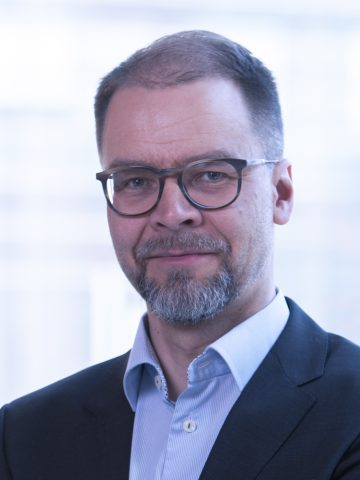New era for the construction industry

Teemu Vehmaskoski
Managing Director, Sanoma Tekniikkajulkaisut Oy Ltd.
Finland
teemu.vehmaskoski@sanoma.com
The Finnish construction industry has been in repeat and optimize mode since the widespread application of prefabricated concrete elements in the 1960s. This has been challenged in large scale only twice – in the oil crisis, beginning in 1973, and after the dissolution of Soviet Union in 1991. However, the structure of the construction ecosystem has stayed pretty much the same until today. This is likely to change soon, as the market realities go through a step change and the price tag for climate change non-mitigation becomes ever more transparent.
The Finnish construction industry has just lived through one of its heydays. Annual production of apartments has been over 35.000 units in every year since 2016, with a maximum of 47.000 units in 2021. This is a lot, as the long term estimate for new build demand is slightly above 30.000 units.
The excess demand is a sum of favorable conditions. Low interest rates and ever-continuing bull market in global finance has brought the international housing funds to play a major role in remote yet stable countries like Finland. In the same time, domestic households have benefited directly of the growing share of housing company debt in financing new builds. This has lowered the investment threshold both for professionals and wannabes. As a consequence, the production of apartment houses has almost doubled from early 2010s.
Biggest booms tend to come right before busts. Yet even Covid did not cut the boom, rather the opposite – construction was one of the unlikely survivors of the epidemic. The government stimulus packages were partly channeled to second homes and buy-to-let apartments for those who did not need to fear unemployment. This amplified the phenomenon where already in 2019 more than half of new studio apartments were sold to investors.
Basic challenge in improving energy efficiency of the building stock is its very slow renewal rate. It would be nice if the boom in construction volumes had enabled a giant leap in energy efficiency, but this is not quite the case. Added insulation, improved air tightness, and three- to fourfold glazing all follow the tightening building standards and contribute to improvements in new builds. Partially the same methods, but especially renewing the old heating systems to heat pumps, do the trick when renovating older properties.
Yet the sheer number of apartments, their average size per inhabitant, as well as electrification of everything have grown at a rate that has been impossible to beat by energy savings. As a result, Finnish households’ energy consumption has actually increased by 12 per cent since the year 2000.
According to an old joke, in times of trouble the contractors can’t afford to develop their business – and in good times they don’t have the time. Thus they never do. This would be a cynical interpretation of their low profitability, yet the numbers do suggest that something is indeed missing. Competition is fierce, that is for sure. And although a few newcomers have even made it to the stock exchange, their longevity still remains to be tested.
Interestingly, the same period of time has made the built environment design and consulting companies to continuously renew themselves. There the main driver for change has been investor money, either looking for quick market share for Nordic companies or a path for growth and exit for private equity. Until now the results have been somewhat more promising than with contractors.
Some design companies have been able to leverage this by developing new products and services that cater to new needs and new clientele. These vary from complex urban planning software to using data in predictive real estate management. Simultaneously parts of design work have been simplified and automated by algorithmic software at drafting stage. Overarching themes have been digitalization and sustainability. These resonate well with the biggest challenge of our time: the multidisciplinary push for net zero carbon.
Design and consulting companies have less fixed assets and laws of nature to worry about, so they are not directly comparable to the hard realities of contractors. Yet it is obvious that both fixed and fluid approaches are needed as the sector moves to its next phase. New carbon emission mitigation measures will inevitably change the way that the construction sector is expected and allowed to operate from now on.
Luckily for the Finns, it seems that the challenge can be coded to engineering language. As consensus on mitigation’s key performance indicators and schedules develop, they can be used as such in building information models and also to develop contract models, regulations and laws. All these are currently in motion. And all this brings the contractors, designers and consultants closer to the client, as well each other. It is likely that in climate change mitigation and innovation Finland will play a role that is way bigger than one would have expected.
Expert article 3324
>Back to Baltic Rim Economies 5/2022
To receive the Baltic Rim Economies review free of charge, you may register to the mailing list.
The review is published 4-6 times a year.
